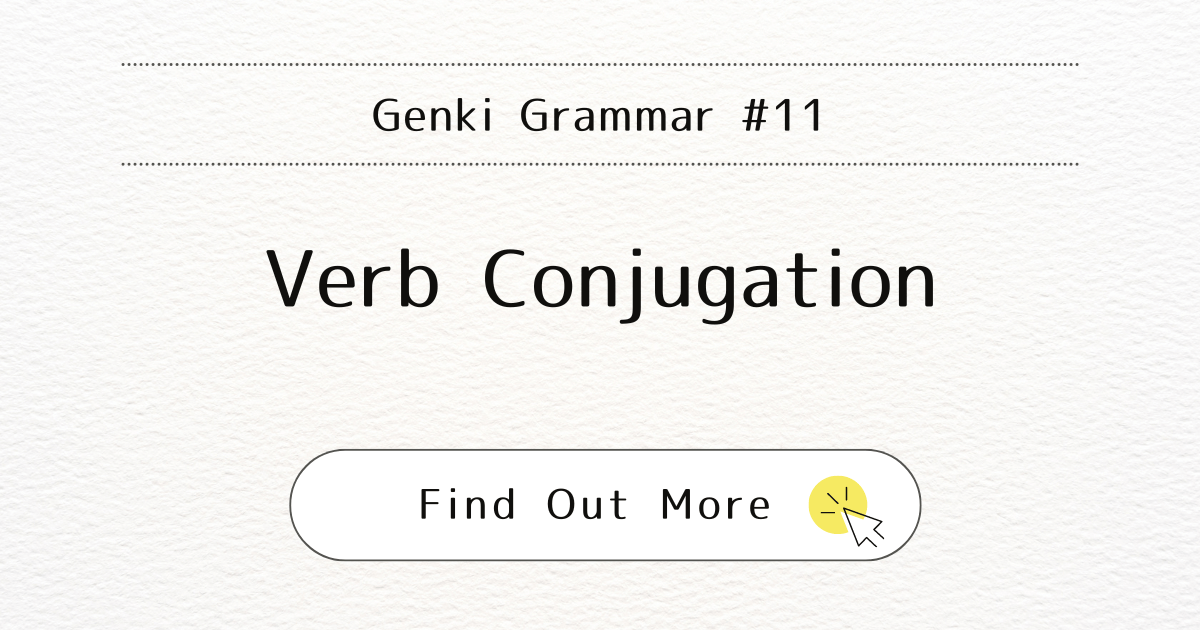
Introduction
Learning verb conjugation is essential in Japanese. In this post, we’ll cover dictionary forms, present tense affirmative forms, and present tense negative forms. We’ll also sort verbs into three groups: ru-verbs, u-verbs, and irregular verbs.
What It Means
Verb conjugation in Japanese changes the verb ending to show different tenses and forms. Understanding these changes is key to speaking and writing correctly.
When You Use It
You use verb conjugation to talk about actions and states. In this post, we will focus on the present tense.
Examples
Three Groups of Verbs in dictionary form
Ru-verbs
Ru-verbs end with “eru” or “iru.”
- 食べる (taberu) – to eat
- 寝る (neru) – to sleep
- 起きる (okiru) – to wake up
- 見る (miru) – to see
U-verbs
U-verbs end with a consonant plus “u.”
- 飲む (nomu) – to drink
- 読む (yomu) – to read
- 話す (hanasu) – to speak
- 聞く (kiku) – to listen
- 行く (iku) – to go
- 帰る (kaeru) – to return
Irregular Verbs
There are only two main irregular verbs: する (suru) and くる (kuru).
- する (suru) – to do
- 勉強する (benkyousuru) – to study
- くる (kuru) – to come
Present Tense Conjugation
Ru-verbs
Replace “ru” in dictionary form with “masu” (affirmative) or “masen” (negative).
- 食べる (taberu) – 食べます (tabemasu), 食べません (tabemasen)
- 寝る (neru) – 寝ます (nemasu), 寝ません (nemasen)
- 起きる (okiru) – 起きます (okimasu), 起きません (okimasen)
- 見る (miru) – 見ます (mimasu), 見ません (mimasen)
U-verbs
Replace “u” in dictionary form with “imasu” (affirmative) or “imasen” (negative).
- 飲む (nomu) – 飲みます (nomimasu), 飲みません (nomimasen)
- 読む (yomu) – 読みます (yomimasu), 読みません (yomimasen)
- 話す (hanasu) – 話します (hanashimasu), 話しません (hanashimasen)
- 聞く (kiku) – 聞きます (kikimasu), 聞きません (kikimasen)
- 行く (iku) – 行きます (ikimasu), 行きません (ikimasen)
- 帰る (kaeru) – 帰ります (kaerimasu), 帰りません (kaerimasen)
Irregular Verbs
Irregular verbs are only する (suru) and くる (kuru). 勉強する (benkyousuru) looks different, but it combines the noun 勉強 (benkyou) with する (suru). Verbs like this are also categorized as irregular verbs.
- する (suru) – します (shimasu), しません (shimasen)
- 勉強する (benkyousuru) – 勉強します (benkyoushimasu), 勉強しません (benkyoushimasen)
- くる (kuru) – きます (kimasu), きません (kimasen)
Note
Remember which verbs belong to which conjugation class. It’s helpful to memorize verbs with their present tense forms. For example, instead of just memorizing 行く (iku), memorize 行く-行きます (iku-ikimasu).
Conclusion
Mastering verb conjugation is a crucial step in learning Japanese. Understanding the different groups and how to conjugate verbs in the present tense will greatly improve your communication skills. Practice these forms regularly to become more comfortable using them.



